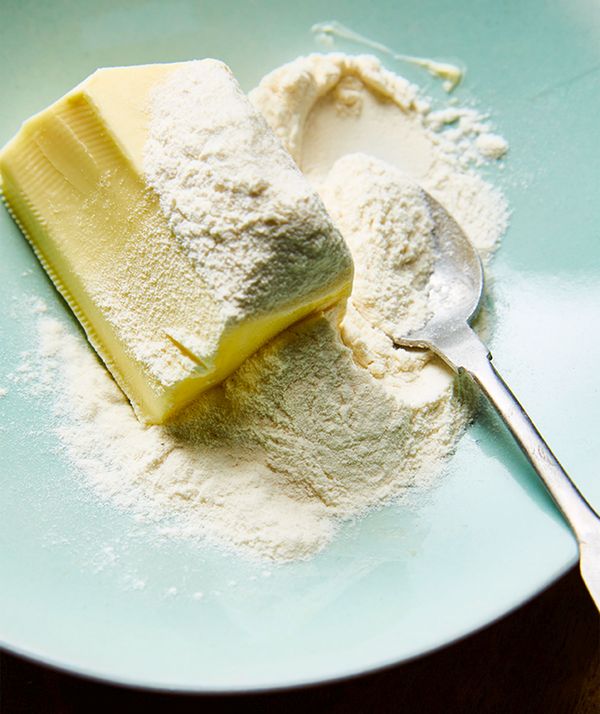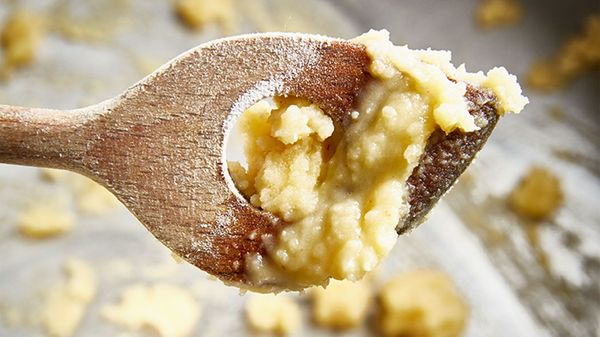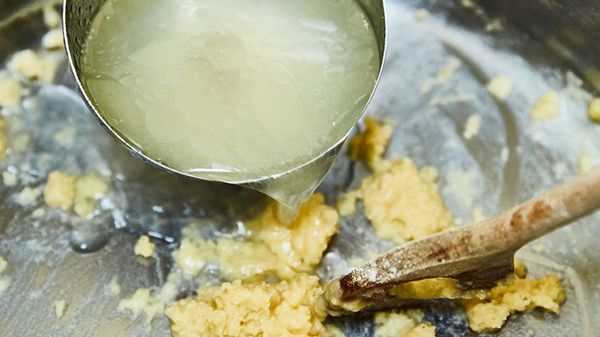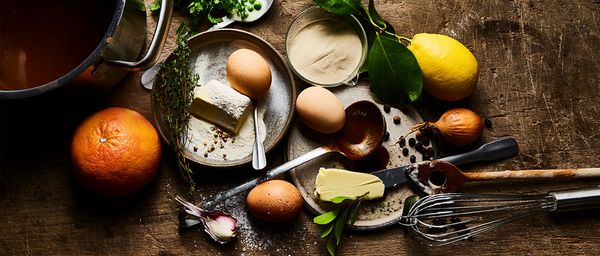
Delicately flavoured light sauces have a strong tradition in many european cuisines. The secret behind their creamy consistency is flour and butter.

What do béchamel, sauce Mornay, and velouté have in common?
They don’t rely on flavour-intensive browned-on residue in the pan as their base and are bound using a cooked mix of flour and butter. It is this roux which gives the sauces their inimitable smoothness and, as such, it is also often used to thicken soupsand fricassees. To make a roux, one part butter and one part flour are combined on a low heat;the paste is then added to liquids such as milk or stock (vegetable, poultry or fish); various notes of flavour can then be added with fresh or sweated herbs, vegetables, white pepper, nutmeg and a squirt of lemon juice. In Italian cuisine, cheese is added to white sauces to make pasta dishes.

Step 1
Melt butter in a saucepan and, if desired, sweat aromatic additions such as chopped onions in it. The same weight of flour is then dusted over the hot butter and whisked in the pan to form the yellow mass referred to as the roux. A classic béchamel is made by stirring warm milk into the roux and bringing the mixture to the boil so thatit thickens to form a creamy sauce.

Step 2
Alternatively, you can use your roux to bind a soup or fricassee. Take a ladle of the cooking liquid and stir it into the roux, waiting for it to thicken somewhat before returning it to the soup or fricassee, stirring constantly. To make sure the starch from the roux is dissolved into the whole sauce, you will need to bring your soup or fricassee to the boil; stir strongly and don’t apply too much heat so that it doesn’t catch on the bottom of the pot.


